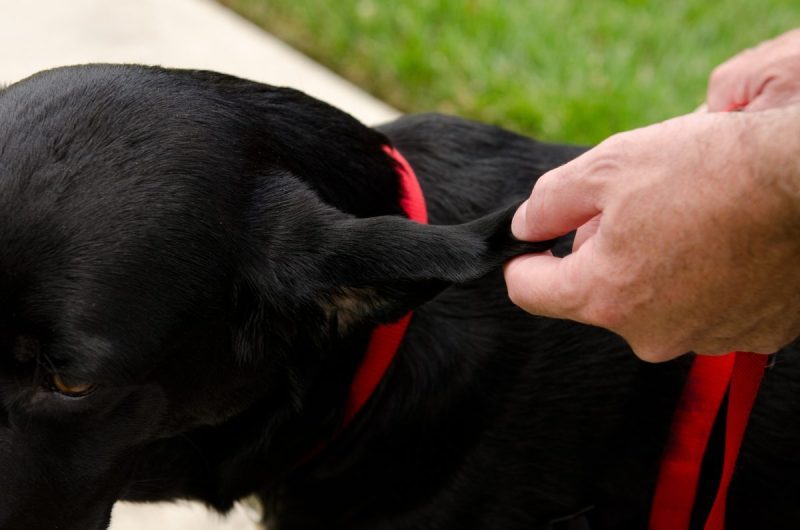
Hematomas in dogs happen when blood vessels burst and cause blood-filled blisters. Usually, they form under the skin and are common on dogs’ ears. They can also form on other parts of the body or can occur in internal organs. The blisters are painful and often form due to injury or scratching and other responses to irritation such as ear mites, allergies, or ear infections. This can lead to further scratching, head shaking, and more blisters.
It’s important to consult your veterinarian and come up with a treatment plan for your dog if you see the signs. Here’s what you should know about the symptoms, causes, and treatments for hematomas in dogs.
Symptoms of hematomas in dogs
Symptoms of hematomas in dogs depend on where the hematomas are located. When the blister is under the skin, it’s fairly easy to spot the swelling.
Here are some common symptoms you might see with hematomas under the skin in dogs:
- Swelling
- Discoloration
- Deformity when located on the ear
- Pain and aversion to touch
- Scratching or head-shaking
When the hematoma is internal and away from the skin, it can lead to complications depending on which organs are affected, and sometimes there are no outward signs at all.
Here are some symptoms that can occur in dogs with internal hematomas, though there are many other possible symptoms:
- Seizures
- Comas
- Neurological damage
- Organ failure
- Pain
- Incontinence
Causes of hematomas in dogs
Hematomas are usually caused by injury in dogs. Most often, this is through damage to the ears. When dogs shake their heads too much or scratch, blood vessels can break, especially in the ear flaps. Ear infections and ear mites are common causes of irritation in the ears that may cause a dog to scratch or shake their head. It’s important to treat these conditions before your dog causes self injury.
Hematomas can form from injuries that occur when fighting with other dogs. Any number of injuries may result in the formation of blood blisters.
Certain medical conditions can also lead to hematomas. Allergies and skin conditions may cause them or cause a dog to scratch and chew, leading to injuries and blisters. Another cause is blood clotting abnormalities, though these are less common.
Treatments for hematomas in dogs
You should see your veterinarian for the treatment of hematomas. Some can heal on their own, but this can take several weeks and will leave your dog in pain and discomfort, and there is a risk of forming new blisters if your dog further damages the affected area with scratching, chewing, or head shaking.
Depending on the size and location, your veterinarian may drain the hematoma of blood. Draining sometimes isn’t a perfect solution, as the area can refill with blood. It may be necessary to put in a temporary drain to prevent blood from accumulating.
Surgery under anesthesia may be the next option, especially with internal hematomas that aren’t near the skin. With surgery, the blood is drained, the clot is removed, and the area is sutured so that blood cannot re-enter the area.
In cases of hematomas on the ears, the ears may be bandaged to prevent further slapping against the head, and your dog may have to wear an Elizabethan collar to prevent further damage.
It’s also important to treat the underlying cause. If there is an injury, it should be addressed. If the wound is self-inflicted due to itching from allergies, parasites, or infection, those conditions must be treated, as well. Ear infections are especially likely to cause hematomas. Always take your dog to the veterinarian to treat these conditions quickly to avoid further complications.





